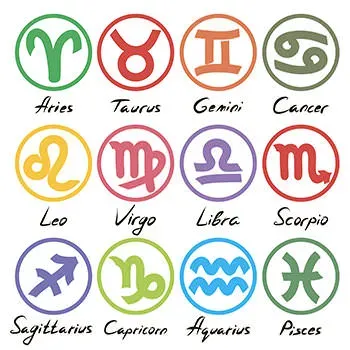 In the first Century, Josephus wrote about precious gemstones and each stone's connection to every different month of the year. In the fifth Century, St. Jerome wrote about the same subject. It is from these two writers that the idea sprung of each precious stone having a particular special meaning. Every stone was dedicated to a month of the year, with a special virtue attached to it for the people born in that month. This stone became their natal stone. Both of these authors distinctly proclaim the connection between the twelve stones of the high priest's breastplate with the twelve months of the year, as well as the twelve zodiac signs. Strangely, however, there is no evidence of people wearing these stones until a much later date. It seems this tradition started in Poland in the 18th Century. We have reason to believe that wearing the stones was not seen as important because before the 18th Century, the therapeutic and health values assigned to each particular stone recommended that each person wear the stone that would help them with their particular ailment. However, the person's natal stone might not have had the power to cure the disease from which the person was suffering. The stone may also not have brought about the fulfillment of the wearer's wishes. We conclude, therefore, that "it was long before the mystic bond between the stone of the month and the person born in that month was fully realized."""
In the first Century, Josephus wrote about precious gemstones and each stone's connection to every different month of the year. In the fifth Century, St. Jerome wrote about the same subject. It is from these two writers that the idea sprung of each precious stone having a particular special meaning. Every stone was dedicated to a month of the year, with a special virtue attached to it for the people born in that month. This stone became their natal stone. Both of these authors distinctly proclaim the connection between the twelve stones of the high priest's breastplate with the twelve months of the year, as well as the twelve zodiac signs. Strangely, however, there is no evidence of people wearing these stones until a much later date. It seems this tradition started in Poland in the 18th Century. We have reason to believe that wearing the stones was not seen as important because before the 18th Century, the therapeutic and health values assigned to each particular stone recommended that each person wear the stone that would help them with their particular ailment. However, the person's natal stone might not have had the power to cure the disease from which the person was suffering. The stone may also not have brought about the fulfillment of the wearer's wishes. We conclude, therefore, that "it was long before the mystic bond between the stone of the month and the person born in that month was fully realized."""
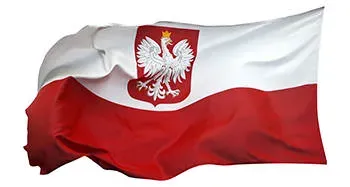 The birthstone chosen for each month was based upon the foundation of stones of the New Jerusalem in the book of Revelation. The first stone was assigned to the month of March- the spring equinox- and to St. Peter, the leader of the apostles. The second stone was connected to the month of April; the third to the month of May and so on. Centuries later in Poland, changes were made to this order, when many people started wearing their birthstones. With the help of Hebrew gem traders and rabbis, these changes included some of the stones not being mentioned among those that were supposedly on the breastplate or of the New Jerusalem. Some of these changes included using
The birthstone chosen for each month was based upon the foundation of stones of the New Jerusalem in the book of Revelation. The first stone was assigned to the month of March- the spring equinox- and to St. Peter, the leader of the apostles. The second stone was connected to the month of April; the third to the month of May and so on. Centuries later in Poland, changes were made to this order, when many people started wearing their birthstones. With the help of Hebrew gem traders and rabbis, these changes included some of the stones not being mentioned among those that were supposedly on the breastplate or of the New Jerusalem. Some of these changes included using ![]() turquoise for December,
turquoise for December, ![]() ruby for July, and
ruby for July, and ![]() diamond for April.
diamond for April.
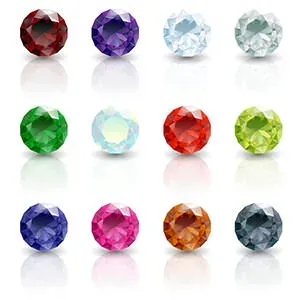 There is evidence that shows that at the start of these beliefs in the power of gemstones, one man bought all twelve of the stones and wore each one during the month which it was assigned to, or during its assigned astrological period. The stone of the month was believed to exercise its full powers during that period.
There is evidence that shows that at the start of these beliefs in the power of gemstones, one man bought all twelve of the stones and wore each one during the month which it was assigned to, or during its assigned astrological period. The stone of the month was believed to exercise its full powers during that period.
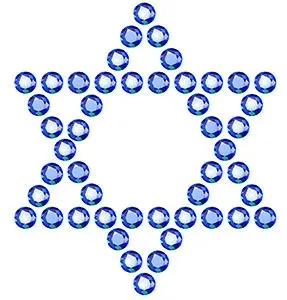 It seems likely that the development of the belief in natal stones that took place in Poland was because of the influence of the Jews. Jewish people settled in Poland just before the first evidence of the use of these birthstones. There are other reasons why we can assume the Jews had something to do with this superstition. They always had a keen interest in the gems of the breastplate, many Jewish writers wrote upon the subject, and many wealthy Jewish people always carried precious stones with, or on them.
It seems likely that the development of the belief in natal stones that took place in Poland was because of the influence of the Jews. Jewish people settled in Poland just before the first evidence of the use of these birthstones. There are other reasons why we can assume the Jews had something to do with this superstition. They always had a keen interest in the gems of the breastplate, many Jewish writers wrote upon the subject, and many wealthy Jewish people always carried precious stones with, or on them.
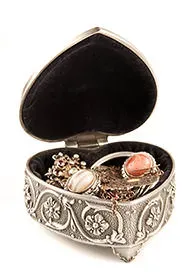 Whether or not the above theory is correct, this fashion they started is still alive and kicking today. One who owns a piece of jewelry with their birthstone is proud to possess something so intimately connected to his or her personality- more so than they would feel owning any other stone, however beautiful or expensive it may be. If someone were to say that this phenomenon had nothing to do with reality, but rather only imagination, we must keep in mind that imagination is one of the most important factors in our life. Napolean is quoted as saying that "imagination rules the world."""
Whether or not the above theory is correct, this fashion they started is still alive and kicking today. One who owns a piece of jewelry with their birthstone is proud to possess something so intimately connected to his or her personality- more so than they would feel owning any other stone, however beautiful or expensive it may be. If someone were to say that this phenomenon had nothing to do with reality, but rather only imagination, we must keep in mind that imagination is one of the most important factors in our life. Napolean is quoted as saying that "imagination rules the world."""